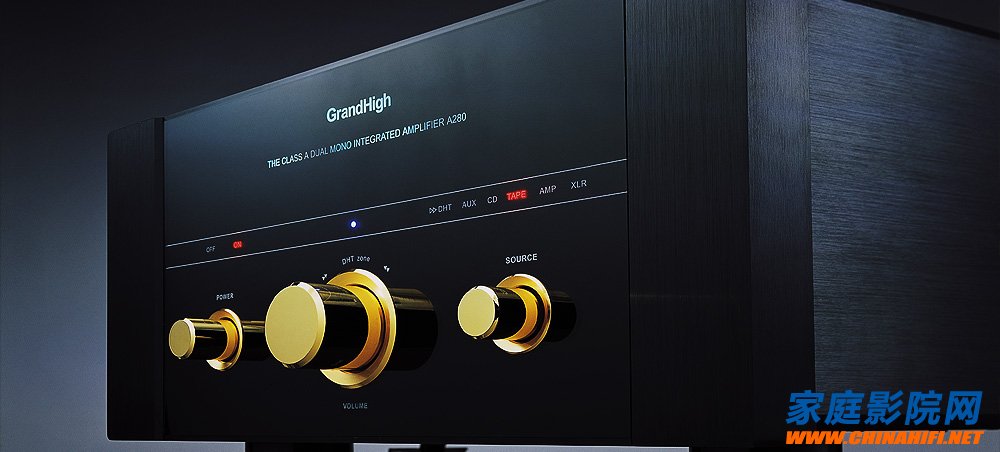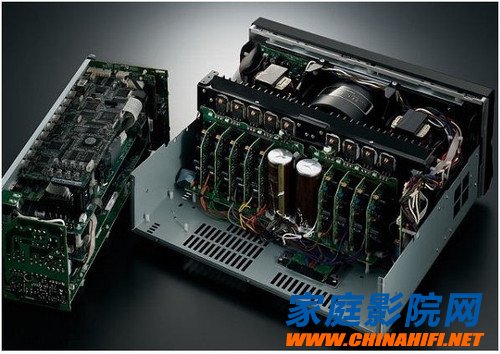First, why is the "heat engine" better than the "cold machine"?
When the power amplifier has not been warmed up or the temperature rise is small, the temperature inside the machine is basically the same as the ambient temperature. In this state, the power amplifier is called a cold machine. At this time, the quiescent current at each level is still small, and the final current is only 20-30 mA. (Slightly large in midsummer), equivalent to a low-biased class A or B, the sound is naturally "good", but as the junction temperature rises slowly, β increases by about 1% for every 1 °C increase, Vbe The reduction of about 2.5mV, the two at the same time, the transistor quiescent current will rise very fast, when the machine is baked to the heat balance, the working points of all levels have already reached the class A rated bias state, then the sound is also authentic "A "Sound-like", so it is relatively "good". Moreover, after the power amplifier reaches thermal equilibrium, the static working points at all levels are also stable, which is also conducive to improving the sense of hearing. For the machine using BJT+MOSFET, the above rules are also followed, and the machine using the full MOS tube is different. The static current at each level will be greater than the thermal value in the cold state, but the operating points at all levels are unstable in the cold state, so listening The feeling is not as good as the hot state.

Second, how come "thermal noise"
Some economic class A power amplifiers are quiet when the power is turned on, and after the heat is raised, the noise comes out. Because of the relationship with "heat", people think that this is "thermal noise." Thermal noise refers to the noise floor of the RC element inside the amplifier and the internal scatter noise of the transistor when the temperature is higher than the critical temperature. In fact, these “sounds†still cannot work for the horn, so why are these audible noises coming from? Comes? When the power amplifier is cold, the quiescent current is small at each level, the power supply load is light, the power supply ripple and noise are very small, and after reaching the thermal steady state, the quiescent current can be increased by more than ten times, and the power load is increased. Waves and noise also become larger, and noise naturally comes out. It is easy to prove this: 1. The voltage amplification stage is separately powered by a regulated power supply, which can significantly reduce the "thermal noise". If the regulated power supply has been used separately, it may be replaced with a higher-quality stable power supply with a larger capacity; 2. Powered by the battery, you will be surprised to find that "thermal noise" is also gone. In addition, the vibration and stray magnetic field of the transformer will increase after the load is aggravated, and it will also help to increase the noise. Therefore, the so-called "hot" noise and temperature do have a relationship, but the essence is mainly caused by power supply ripple.

Third, why pure class A power amplifiers are relatively expensive
Pure Class A power amplifiers often work in high temperature environments of 60 ° C ~ 85 ° C, so the requirements on components and process levels are very demanding, online adjustment is cumbersome and time consuming, such as the matching of the final stage power amplifier tube is near the rated working temperature point Dynamic and static measurement and matching, although the performance of the standard is guaranteed, 100 pairs of pipes can usually only pick one or two pairs, while some high-end class A power amplifiers usually have 2 per channel. ~ 12 pairs of transistors, Imagine hundreds of thousands of high-quality genuine high-power transistors worth how much money, carefully selected from which one or twenty pairs of tubes have to spend time, such as the clock god JA-100 power amplifier tube is from 260 pairs Selected in the genuine.

4. Is the economic class A power amplifier suitable for you?
This section refers to Class A power amplifiers with a price not exceeding 2,000 yuan. Compared with Class A or Class A amplifiers of the same price, the overall index is inferior. For example, transient response is better than A. Class B, but Class A power amplifier itself has large power consumption and relatively small power reserve. Therefore, soft foot phenomenon often occurs in large dynamics, and the same power supply capacity, Class A and B are relatively large, and transient response is better than Class A. The output power is one of the important parameters of the matching equipment. The economical Class A power amplifier generally has a power of about 20 or 30 watts. To increase the output power, the cost of the transformer, radiator, and power amplifier tube will exceed the design budget. Considering that the final stage power supply voltage of these amplifiers is low, the output current is also small, and there is a certain difficulty in matching the speakers. The output power of the Class A and Class B machines of the same price is often more than three times, and it is relatively easy to match the speakers; As mentioned above, the "thermal noise" of the economical class A machine cannot be ignored, and the temperature difference between the cold and the hot state is also large. The pairing error of the transistors at all levels is also large, and due to the cost relationship, Of course, we must also see that the replay level of the economical Class A power amplifier and the small-caliber unit matched by the power amplifier parameters introduced by some well-known domestic manufacturers is also ideal.
Why is the Class A power amplifier better than the Class B power amplifier?
In static state, Class A power amplifiers and Class B power amplifiers are connected to purely resistive loads. The test may have similar indicators, and even the thermal noise class A is larger. However, in actual application, the real load (dynamic load) is connected to the speaker, and the impedance of the speaker is different at different frequencies. At this time, the comprehensive electroacoustic index will be inferior to the index of the pure resistive load, generating transients. distortion. Since the existence of negative feedback is fed back to the previous stage, the key to this transient distortion is that the overall design of the speaker system quality is caused by effective, uninterrupted damping (control), and the higher the voltage rise rate of the signal, the distortion The more serious it is. For high fidelity, it is important that the mass inertia of the speaker system is effectively damped (controlled) by the amplifier.
The damping of Class B power amplifier can not effectively control the speaker. For any half-cycle, only one arm output is working, or push or pull, but it can't work at the same time, so its damping is unidirectional, that is, whether it is positive half or negative half, he only has The power that drives the working of the speaker is generated, and the pulling force that controls the back is not generated. To all-round damping, the driving current must be reversed in time, and the problem is here. Taking the input square wave as an example, the input signal may be more complicated than the square wave when working. When the signal rises, the speaker can work according to the signal waveform, but when the signal suddenly stops, the speaker will not stop immediately due to the inertia of mass. At this time, its voice coil generates a back electromotive force, causing the A-arm output tube that is being turned on to be turned off and turned off, while the B-arm that was originally turned off is turned on, and this back-EMF is sent back to the previous stage by negative feedback. In this way, the B-arm output tube is energized to accelerate the conduction, and the special damping of the Class B power amplifier is completed together, because this process has to cross the zero point, and there is a moment of loss of the damping free oscillation. After this process is completed, the B-arm conduction is turned off, and the A-arm output tube, which was originally turned on and reversed, is restored to conduct, and the damping is restored only when the zero-crossing point loses damping. Therefore, the damping of the class B power amplifier is unidirectional at any moment, and the damping of the speaker is realized by the reciprocal zero-crossing phase commutation, and the distortion is generated almost at all times.
Class A power amplifiers are both positive and negative, and the damping coefficient is bidirectional. When the sudden high voltage rises, the voice coil moves according to the waveform. When the signal stops, the back EMF completes the path through the conductive B arm. Damped, unable to generate free oscillation, the back EMF can not be established, the omnidirectional damping of Class A power amplifier, forcing the vibration of the speaker to always vibrate according to the waveform of the signal. This is like a motorcycle that is pre-emptive. If you leave, stop and stop. It is a good place to be a good person, so the sound of Class A power amplifier is better than that of Class B power amplifier. Home Theater Network WeChat: cnhifi.
Optical Fibre To Rj45 Converter,Sc To Sc Coupler,Sc Duplex Adapter,Sc To St Adapter
Ningbo Fengwei Communication Technology Co., Ltd , https://www.fengweifiberoptic.com